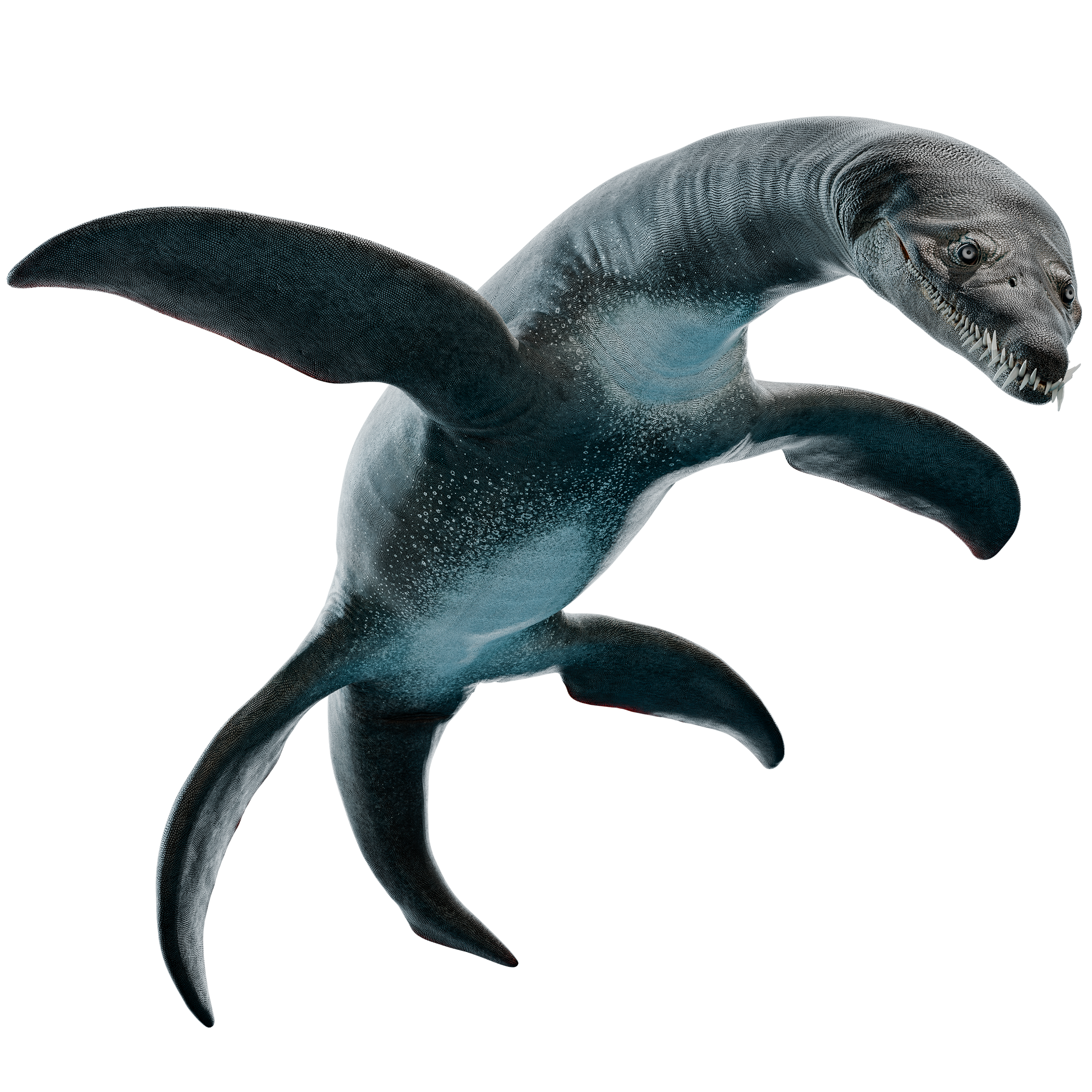The Mildly Macropredatory Plesiosaur of the Early Jurassic
Most plesiosaurs come in two main flavors: long-necked, small headed hunters of small prey, and short-necked, big-headed macropredators. But Rhomaleosaurus and its kin were somewhere in between and it is still unclear how exactly they are related to other plesiosaurs.
Overview: Most plesiosaurs had long necks and small heads and ate relatively small fish and squid. But some plesiosaurs, the advanced members of the family Pliosauridae (called pliosaurs), had big heads and short necks, and were macropredators, consuming larger prey like other marine reptiles. And then there was Rhomaleosaurus and its kin, which were somewhere in between, having larger heads and shorter necks than typical plesiosaurs, but smaller heads and longer necks than typical pliosaurs, indicating they probably ate larger prey than most typical plesiosaurs, but not as large as pliosaurs. These mildly macropredatory plesiosaurs may be an early branch of the plesiosaur family tree, or they may themselves be an early branch of intermediate pliosaurs. Rhomaleosaurus was discovered in 1848 but only in 2006 was preparation on the skull complete, allowing a for more thorough study on the genus.
Discovery: Rhomaleosaurus cramptoni was discovered in the rocks of the Whitby Mudstone Formation dating to about 183-175.6 million years ago in the Toarcian age of the Early Jurassic Period. Its discovery took place in 1848, and it was found in an Alum quarry near the town of Kettleness in Yorkshire, England. This specimen is a complete skeleton. It came into the possession of Irish surgeon and anatomist Sir Philip Crampton, who later donated it for display at the 1853 British Association annual meeting. Eventually it was transferred to the Royal Dublin Society Museum and in 1861, it was named Plesiosaurus cramptoni, after Sir Philip Crampton, by the describers Alexander Carte and W. H. Bailey. In 1874, Harry G. Seeley renamed it Rhomaleosaurus cramptoni, Rhomaleosaurus meaning “strong lizard”. Since then, additional specimens of Rhomaleosaurus have been discovered in addition to R. cramptoni. In 2006, additional preparation of the skull of R. cramptoni was completed, allowing for a thorough redescription of the species and genus by Adam S. Smith and colleagues.
Evolution, Description, and Ecology: Rhomaleosaurus was a large plesiosaur, reaching 6.7–7 meters (22–23 ft) long and weighing 2.1 tonnes (2.3 tons). Like other plesiosaurs, Rhomaleosaurus had a stout, somewhat turtle-shaped body, four large flippers, and a short tail. Rhomaleosaurus and other rhomaleosaurids had larger heads and shorter necks than most typical plesiosaurs, but smaller heads and longer necks than the advanced pliosaurs. Some phylogenetic analyses find rhomaleosaurids to be an early branch off from the plesiosaurs, but others find them to be close relatives of the pliosaurs, or even an early branch of the pliosaurs themselves, thus representing an intermediate form between the long-necked typical plesiosaurs like Plesiosaurus, and the short-necked large-headed pliosaurs like Liopleurodon and Pliosaurus. Rhomaleosaurus probably had an intermediate diet as well, consisting of fish, cephalopods, and other marine reptiles, larger prey than most plesiosaurs, but lacking the same level of killing power as the huge jaws of the pliosaurs. It had a triangular shaped skull with long conical teeth for holding onto prey. Like pliosaurs, Rhomaleosaurus could probably smell underwater, and likely had a strong sense of smell, allowing it to hunt like a shark.
Extinction and Legacy: Rhomaleosaurus probably went extinct due to being replaced by subsequent types of rhomaleosaurids. By the late Jurassic, this group would be extinct entirely, probably due to competition from the truly macropredatory pliosaurs which appeared in the Middle Jurassic. Rhomaleosaurus cramptoni can be seen in the National Museum of Ireland-Natural History (nicknamed by locals as “The Dead Zoo”) in Dublin, Ireland, and in the Natural History Museum in London, England.
Rhomaleosaurus FAQ
Rhomaleosaurus size / How big was Rhomaleosaurus?
See weight and length.
Rhomaleosaurus weight / How much did Rhomaleosaurus weigh?
Rhomaleosaurus probably weighed around 2.1 tonnes (2.3 US tons).
How long was Rhomaleosaurus? / Rhomaleosaurus Length
Rhomaleosaurus was about 6.7–7 meters (22–23 ft) long.
What did Rhomaleosaurus eat?
Rhomaleosaurus was a predator, likely consuming fish, cephalopods, and small marine reptiles.
What is Rhomaleosaurus’s closest living relative?
Rhomaleosaurus was a plesiosaur, which in turn were part of the clade Sauropterygia, whose evolutionary relationships are not well-understood, though some analyses suggest turtles may be their closest living relatives.
Rhomaleosaurus family members / Rhomaleosaurus family / What kind of animal was Rhomaleosaurus?
Rhomaleosaurus was a plesiosaur in the family Rhomaleosauridae. They may be close relatives of the pliosaurs.
Where did Rhomaleosaurus live? / Where was Rhomaleosaurus found?
Rhomaleosaurus lived in the Tethys Sea which once covered much of Europe. Its fossils have been found in England.
When did Rhomaleosaurus live?
Rhomaleosaurus lived around 183-175.6 million years ago in the Early Jurassic Period.
What does Rhomaleosaurus mean? / Rhomaleosaurus name meaning
Rhomaleosaurus means “strong lizard”.

